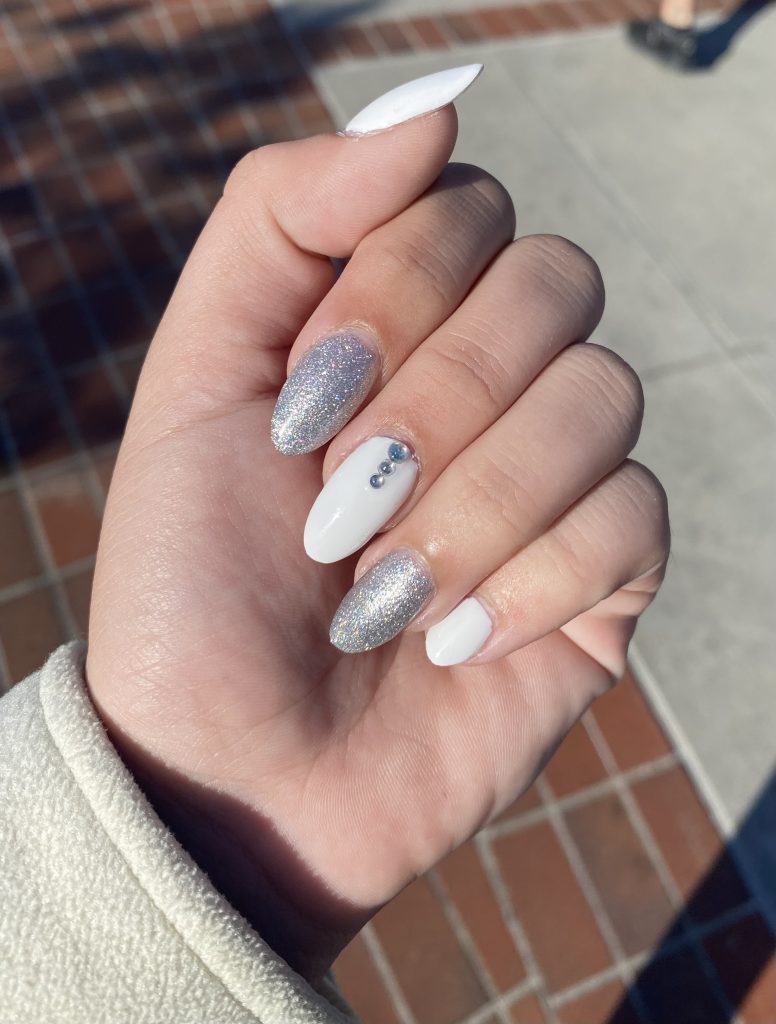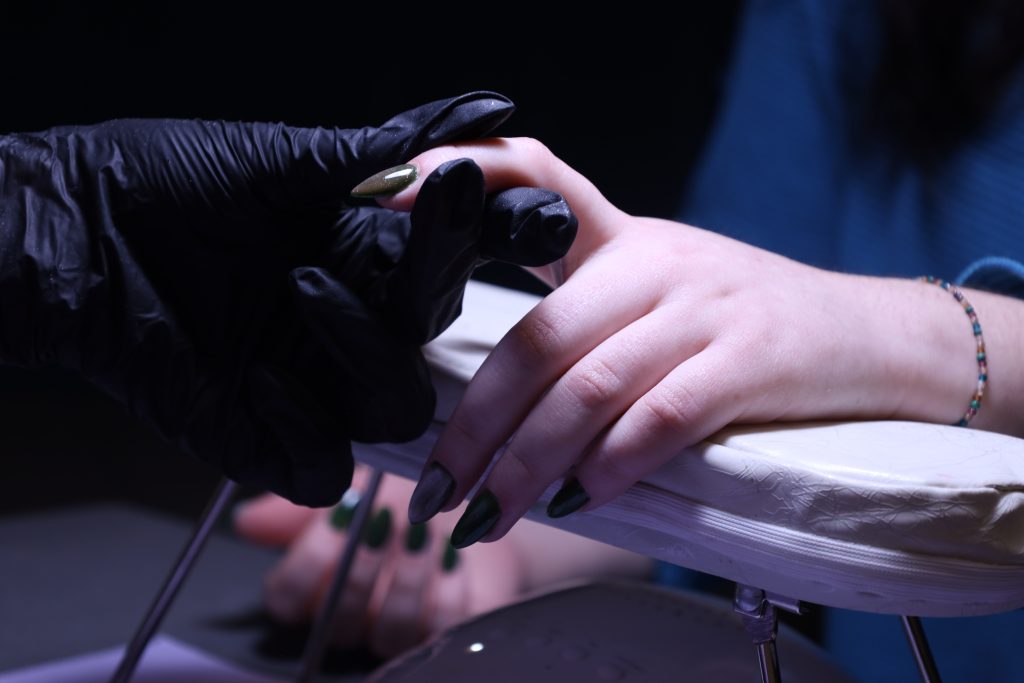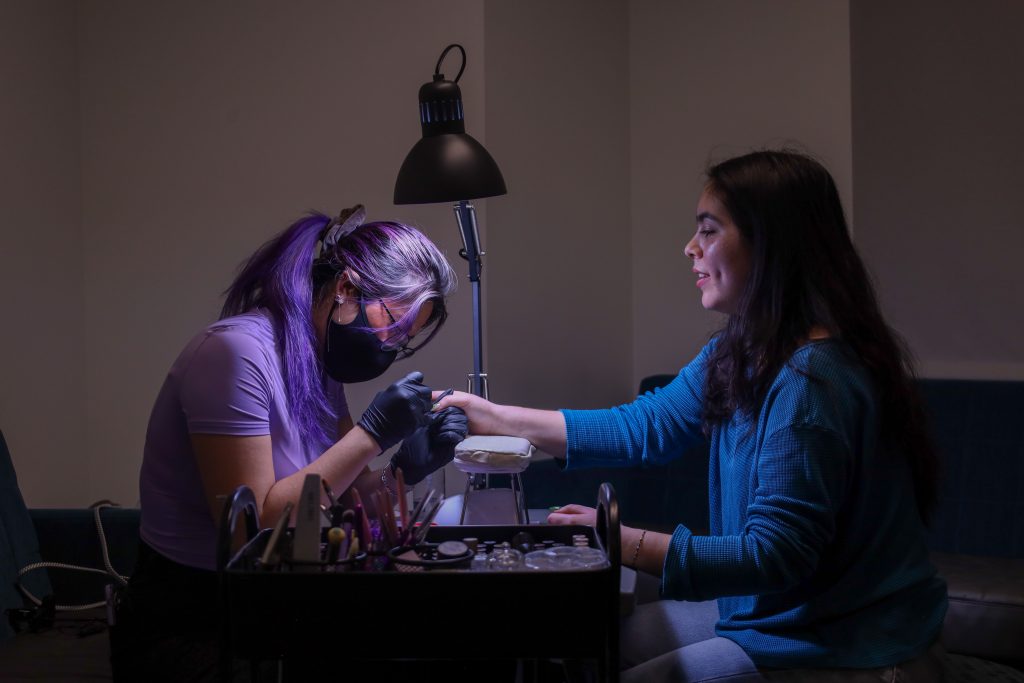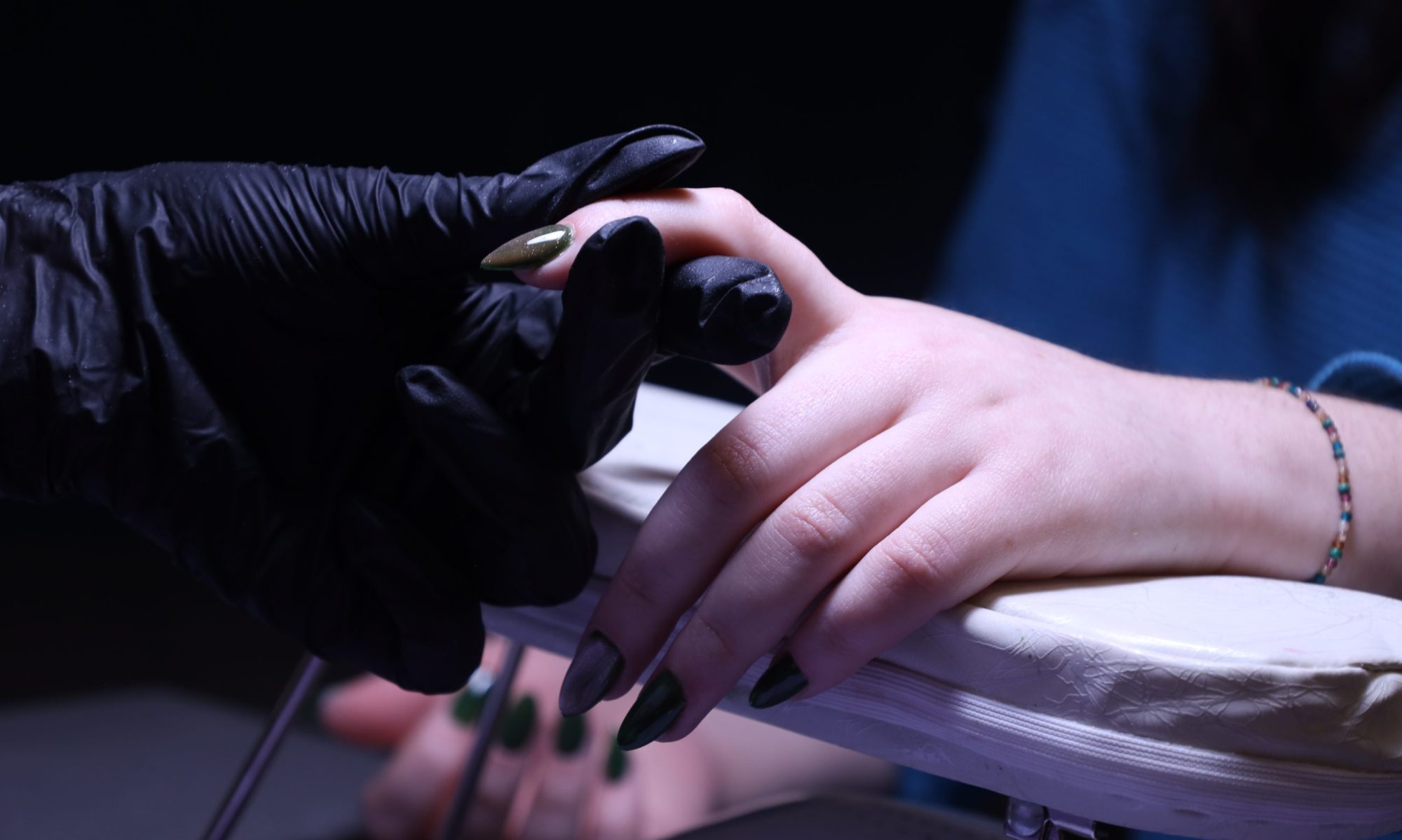CJ Haddad studied online tutorials to learn how to do her own gel manicures.
The USC junior used to go frequent salons as a teenager and enjoyed having her nails done, but the high price point, especially in Los Angeles, pushed her to make a switch.
“When I started handling my own budget as an adult, it just didn’t really feel like an expense that was worth it, even though I wanted to have pretty nails.”

Haddad’s new Do-It-Yorself, or DIY, nail routine is part of the $10.9 billion global nail care market in the U.S. and the growing at-home nail product industry. Economic uncertainty and increasing inflation have driven many consumers to look for ways to cut costs.
Inflation in the U.S. rose between 2023 to 2024 and overall has been much higher since 2020. This has caused consumers to be less likely to splurge or buy luxurious items, and even lose brand loyalty.
According to consumer psychologist, Dr. Cathrine Jansson-Boyd, the types of purchases one makes while under financial stress will change to what they now deem as affordable.
“When we experience some sort of slump in terms of finances, we tend to still want a bit of a treat. If you can’t afford the usual luxuries, you will think about something that feels a bit special, but isn’t very expensive,” she said.
When it comes to nail care, those who regularly budget for nail products and salon visits are the demographic interested in changing their routine, to save money. In the U.S., rising inflation is a big influence for the growing DIY market.
Additionally, Jansson-Boyd says that when people think they’re getting a good price, the part of the brain associated with rewards is activated. “It gives you more of a reward, as a consequence of having spent less and therefore you get more happiness out of it,” she said.
This strong sense of reward is part of why Anaia Johnson, a senior at The University of Alabama, changed her nail care habits. She’d been getting acrylic nails every two weeks since her 12th birthday, until the past few years.
“Acrylics can get expensive, especially if you want designs, but press-on nails stay around the same price. They’re dependable. I know I can get a good set of nails for around $10,” said Johnson.
The decision to buy press-ons (or other supplies for DIY nails) is less expensive than visiting a salon, so consumers like Johnson experience greater satisfaction physiologically while saving money.
Consumers change their habits based on the state of the economy.
The stock market might be booming, but inflation is what people look to as an indicator of the economy, according to Ratika Narag, an associate professor of economics at USC. She points out that the beauty industry has been very resilient even though many are trying to spend less.
She cited the McKinsey report’s prediction that the beauty product industry will be worth $580 billion by 2027.
For USC sophomore, Tammy Premchen, learning a new skill was the most cost-effective solution to keep having Gel-X nails, a type of gel nail extension. While she didn’t want to pay full price, she also didn’t want to give up the luxury of a manicure.
“Nails are almost like an accessory in a way. They really do a lot. If I have longer nails, people’s eyes gravitate towards them,” she said.
Premchen began learning how to do her own nails in February 2023. Practice makes perfect, and soon her friends were inquiring to have her give them budget-friendly manicures. She decided to turn her new skill into a small business and created “Nails by Tammy.”

She now runs an Instagram nail account (@Tammy.X.Nails) with 175 followers, which doubles as her website. Customers can book services through direct messaging and find pricing on her Instagram story highlights. She operates the actual nail appointments in a USC study room.

At-home nail service businesses have seen an increased demand by 32% during the COVID-19 pandemic.
According to Narag, a struggle for many businesses is overhead costs. They not only need to pay labor, but also rent, water, electricity, and supplies. During an economic downturn, these expenses can really add up.
Premchen accounts part of her success to being able to charge much less than a salon because she doesn’t have any real operating expenses outside of materials.
According to the Nineteen 85 Nail Bar, gel manicures in Los Angeles can cost $100 or more. While “Nails by Tammy” charges $35 for gel-manicured nails.
Premchen’s small business has found a loophole to these high business expenses by running a makeshift salon out of a USC study room.
Her lower price point results in higher demand, making her business a prime example of the “lipstick index,” an economic theory, created by Leonard Lauder, the chairman of the board of Estee Lauder. It explains why cosmetic sales increased during the 2008 Great Recession.
As consumers, we don’t typically run out and buy costly luxuries when experiencing financial hardship. But, we may buy smaller things we desire, such as nail polish.
Affordable luxuries, such as lipstick, or, in this case, nail care products, help consumers feel more like themselves, and can even ease the stress of their financial situations, explains Narag.
“If it’s not going to cost that much money and it’s still something they like to do, it will still keep going up. People will spend money on things that they think are part of their identity. It makes them who they are,” she said.
On a smaller scale, businesses like Premchen’s are closing the gap between consumers’ financial insecurity and increasing salon costs. A manicure is a small luxury that clients value but is also becoming less accessible.
COVID-19’s influence
The COVID-19 pandemic influenced many consumers to change their nail practices.
The pandemic shut down everything, so salons were inaccessible. Nail salon devotees had to learn to DIY or go without the luxury.
Serendipitously, nail companies Manucurist and ManiMe launched their businesses in 2019. They both act as an alternative to nail salons and saw great success during the pandemic when DIY was the only option.
Manucurist is the first gel polish that can be removed like a traditional nail polish. It is one of the many growing DIY nail companies. After COVID when salons reponed, some consumers chose to keep saving money and continued to do their own nails.
“People are choosing to go towards more DIY nail products because the cost of getting a manicure is very expensive, and especially during COVID a lot of people wanted to keep getting their nails done and so they looked at alternatives,” said Lexi Lynn, a marketing project manager for Manucurist.
These companies have remained popular, as the market for beauty salons has still not reach what it was before the pandemic.
“Our company is positioned in the perfect middle space where it does allow people to have this kind of luxury, but it isn’t so expensive that it’s out of reach,” said Lynn.
Downtown Los Angeles resident, Kathy Tsaur started doing her own Gel-X nails during the pandemic as a hobby and has continued the DIY practice because of salon’s high price point. The Gel-X kit she uses costs about the same price as one monthly manicure.
“I definitely noticed that, especially with tip, like, just a basic Gel X, one color can cost $130 to $150. And that’s just really, like, not sustainable,” said Tsaur.
Tsaur chose a more difficult type of homemade manicure. She typically does simple glazed or French tip-styled nails, but for special events will add charms or more complex designs. She enjoys that she can customize her nails herself.
“It just makes you feel like put together and, like, it’s just a fun part of your routine that you enjoy,” said Tsaur.

For nail aficionados who prefer a more simple DIY solution, nail sticker company ManiMe aims to make an easy and less expensive way for customers to have styled nails.
Esteban Restrepo Tabares, the CEO and founding member of ManiMe, saw the brand grow during the COVID-19 pandemic. The stickers were one way for people to still have their nails done while quarantined.
“We’ve seen a lot of reviews and feedback from the customers saying that they will not go back to the salon again because it’s [the nail stickers] definitely a cheaper solution,” said Tabares.
ManiMe sells a variety of styled stick-on gel manicures that cost around $10. However, one of the downfalls of ready-to-go manicures is they can’t keep up with trends at the same pace as salons.
“There was a desire for super long nails, super crazy gels, a lot of details, and 3D things in their manicures. People are now paying $200 to go and do these crazy and beautiful nails that it is really hard to achieve at home” said Tabares.
ManiMe saw that there were two main markets for people who enjoy having designed nails. The first wants to be on trend, often choosing complicated nail designs. While the second prefers something convenient and affordable. This second camp has been underserved and is many DIY nail companies’ main target.
ManiMe’s primary customer demographic is 30 to 55-year-old women, who often have busy work lives and families that limit their time.
Now, DIY companies are on the rise and can cater to customers who prefer spending less. Just the nail sticker industry is growing and is expected to keep increasing until 2032.
Nail companies, like Manucurist and ManiMe, allow the delicacy consumers are used to but at a significantly lower price point. People can pay for a less expensive product instead of a service.
The Future
The nail industry is growing rapidly. In 2021, the global nail care market was worth over $19 billion and is predicted to increase with a compound annual growth rate (CAGR) of 5.2% from 2022 to 2030.
Additionally, more than half of the total sales in the nail industry (including salons), came from nail polish sales. People are moving away from traditional salon practices and choosing at-home options.
The artificial nails and accessories segment of this industry is expected to grow at the fastest rate. Younger nail consumers are pushing the market to include long, flashy products, such as press-on nails. These “accessories” or DIY products are growing in popularity partially because of their lower price point.
Ultimately, consumers’ habits depend on how financially stable they are.
“If somebody has a lot of disposable income and they’re buying things, like Chanel, they’ll still keep spending money on that product, because they have a lot more disposable income,” said Narag. But, when they don’t have the same disposable income a change needs to be made.
Inflation has risen and necessary goods, like food, have seen increased prices. Narag explains the inflation rate makes many consumers doubt the economy and become suspicious of a recession.
Dr. Cathrine Jansson-Boyd explains “If you can’t afford the usual luxuries, you will think about something that feels a bit special, but isn’t very expensive,” she said.
This impacts consumer behavior, as people purchase beauty products influenced by their salary and the cost of living. When they are wary of an economic downturn, they may choose to spend less.
Painting your own nails is not a new phenomenon, but as fashion trends are influenced by economic cycles, DIY products may continue to sprout and grow. These products and services provide less expensive and desired alternatives to salons.
